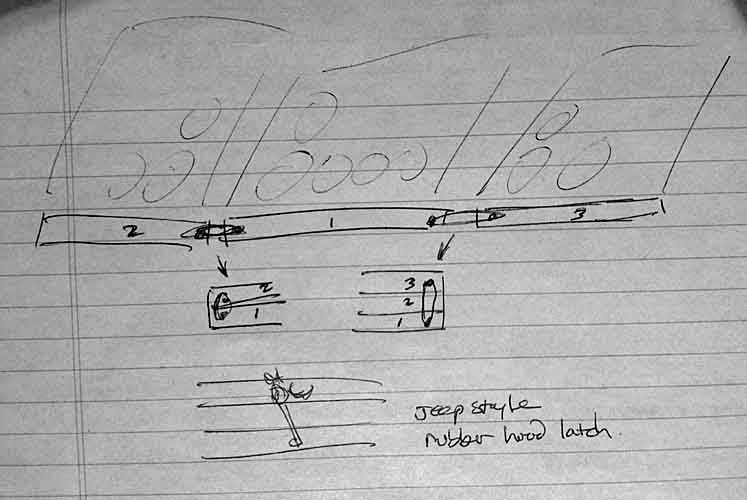There are so many variables that it's hard to give a definitive answer (everything from the amount and angle of insolation, to how much you use your laptops, ambient temp where the fridge is, etc.). However, I have somewhat similar usage, so I can give you a real-world report on that.
I'm running two 100-watt panels in series. I have all my wiring sized for less than 2% total voltage drop over all the legs, and an MPPT controller (Sunsaver 15). I have an "oversized" battery bank (375 amp hours, AGM), but that's only because I planned for twice as much solar. (More on that in a minute.) I monitor with a Victron BMV-700 and a Smartgauge (I like data), plus the display for the Sunsaver. I do have a 1/0 cable to connect the start battery with the house bank, but rarely use it as the solar controller is much "smarter" (custom programmable for battery specs) and the alternator is stupid. The solar takes care of my needs 99% of the time.
My typical draw is around 30-45 amp hours per 24-hour day. This is running a Dometic 50 liter compressor refrigerator (cooler style body), charging my laptop (via 12 volt adapter), plus charging camera batteries, phone, Eneloops for headlamp, etc. My lighting is LED and I use a marine fan (less than .5 amp draw). So the fridge is the big draw, and it averages 25 amp hours or so a day (set at 31ºF). A bit more in hot weather, obviously.
I tend to camp in sunny places, but still, last winter I was in places where the sun "set" around 2 p.m. due to mountains. Given that my battery bank is so disproportionately large, I knew that the "normal" 50% draw down would be very difficult for me to re-charge. But as it happened, I have never gone below 85% in normal use (so that's around 60 amp hours). That would be a day or two of clouds or partial clouds. So my two 100 watt panels have been able to get my batteries back to 100% at least five days per week (this keeps them healthy).
Originally I had planned for 400 watts of rooftop solar, hence the 375 amp hour battery bank (plus I'm a night owl). But I had the two 100 watt "portable" panels so set them up as a trial. Somewhat to my surprise, it's been just about a year since I did that, and they have easily kept up with my usage. The one time I have issues is if I'm traveling for a few days. I'm not super keen to use the alternator (since it's "stupid"), and it's not that convenient to set out the panels in parking lots or in-transit type camp spots. For this reason I'm going to add some rooftop solar. But I won't be giving up the ground panels because I like camping in the shade with the panels in the sun - that has been a great bonus I didn't really think about.
At any rate, that gives you an idea what 200 watts will power. If that were all I had planned on I'd only have around 200 ah of battery. I may actually remove a battery! (Save weight.)
One note is that I don't have many "hidden" draws. No water pump, no furnace fan, no appliances to speak of. That's just the way I'm used to living (boats). So you may have more power usage, depending on how you like to live.
I do have a small (100 watt) inverter that plugs into a cigarette lighter socket. It's for the very few things I have that I don't charge with 12 volts. Namely one set of drill batteries, a Dremel battery charger, and a toothbrush. (Although my newer drill, a Ryobi, does have an optional 12-volt charger.) Everything else is 12-volt.
If you tend to stay in places with long stretches of cloudy weather, this might not work so well.
PS: The reason I ran the two panels in series was so that I could run smaller/longer wire on my ground panels. I have around 25' of 8AWG (plus the wire in the rig to the controller, plus wire from controller to batteries, and then battery jumpers). I wouldn't want the "umbilican" any shorter (or any heavier), so the series setup has worked well. I don't like to give away anything to voltage drop if I don't have to

This does require an MPPT controller so it will be converted (by the controller) to the 13-14 volts the batteries want to see.

